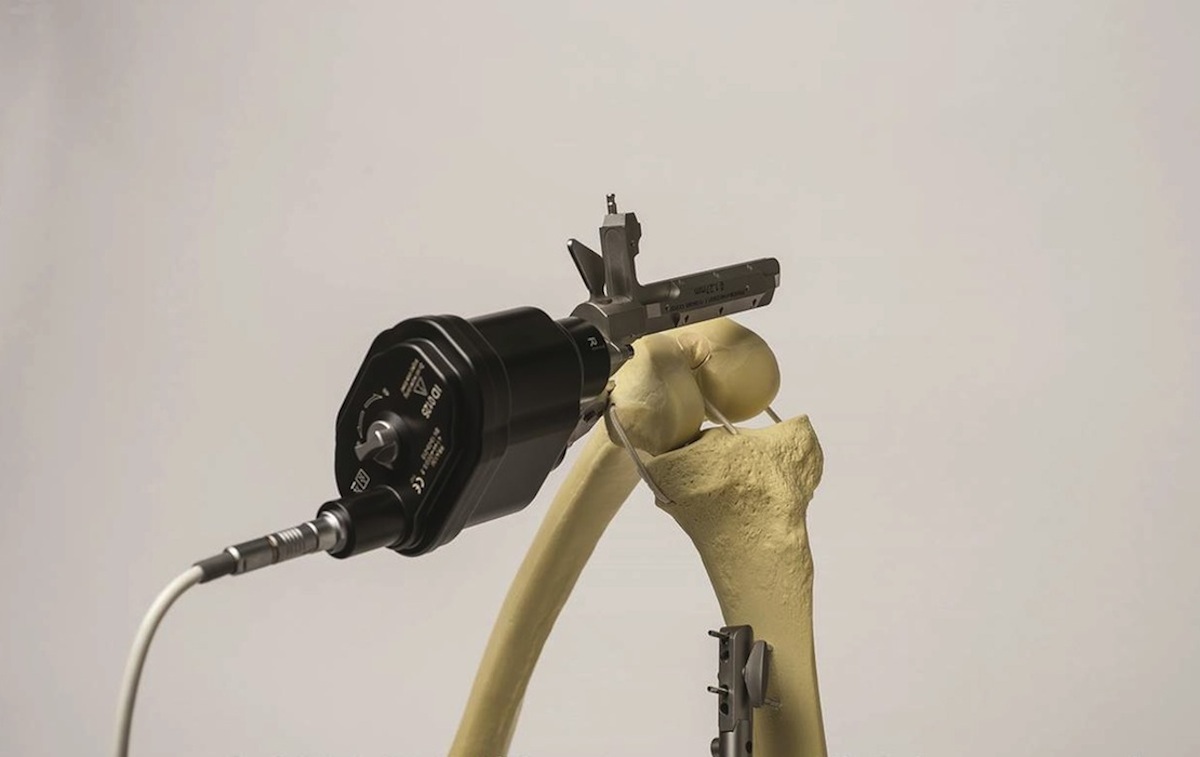OMNIlife Science Improves Knee Surgery Accuracy
If you had just undergone a major surgery like a knee replacement, the last thing you’d want to hear is that your doctor just eyeballed it – but the fact is, that’s exactly how most knee replacements have traditionally worked. Until now.
The OMNInav Surgical Navigation System, created by East Taunton-based OMNIlife science, is seeking to improve the accuracy of total knee replacements by offering doctors robotics-guided precision and accuracy. “If you can imagine drawing a line from the center of your ankle to the center of your hip, that line should go right to the middle of your knee,” explains OMNI CEO George Cipolletti. “The goal of a knee replacement is to take patients who typically wouldn’t be straight and straighten them out. In traditional surgery, a surgeon will get within three degrees of that straight line about 70 percent of the time. With the robot, we’re inside one degree 98 percent of the time.”
To attain that level of accuracy, the system’s software first assesses the patient. Then, based on an algorithm, it gives the doctor suggestions about the optimal size and location of the replacement device. Its specially-engineered robotic component guides the surgeon to ensure that the incisions are made in exactly the right place. “It makes it more reproducible,” Cipolletti says. “We can probably tell three or four degrees off straight [with the naked eye], but you can’t really see one degree very well. The computer, of course, can see it with a very high degree of accuracy.”
The only system of its kind, OMNInav is currently in use in 19 hospitals nationwide, including Quincy Medical Center, and Cipolletti says he expects that number to more than double by the end of next year. Cipolletti says the company also expects to release its total hip replacement system next year, and could potentially expand into partial knee replacements as well.
In addition to accuracy, Cipolletti says the system offers benefits like faster recovery time — some surgeons are now even doing same-day replacement surgeries using the technology — and preventing side effects like disorientation, which often happens in traditional procedures when alignment rods inserted into the thigh bone create pressure and release fat globules into the bloodstream.
The system’s accuracy also caters to the increasing number of younger patients seeking knee replacements. “Maybe 15 years ago if you asked me, ‘Should I wait to have my knee replaced?,’ I might say, ‘Yeah, wait until you really can’t take it,'” Cipolletti says. “Now, it’s different. For a 50-year-old, it’s probably a 90, 95 percent chance the device will outlive them.”
Not only will the device likely outlive its host, Cipolletti says the quality is such that patients can resume their pre-replacement lifestyle. “These patients, they don’t just want pain relief — they want lifestyle restoration,” he says. “Don’t be foolish and go out mogul skiing, but if you love biking, if you love golf, if you love doubles tennis, if you just want to go to the gym and work out on the elliptical, those things are all good.”



